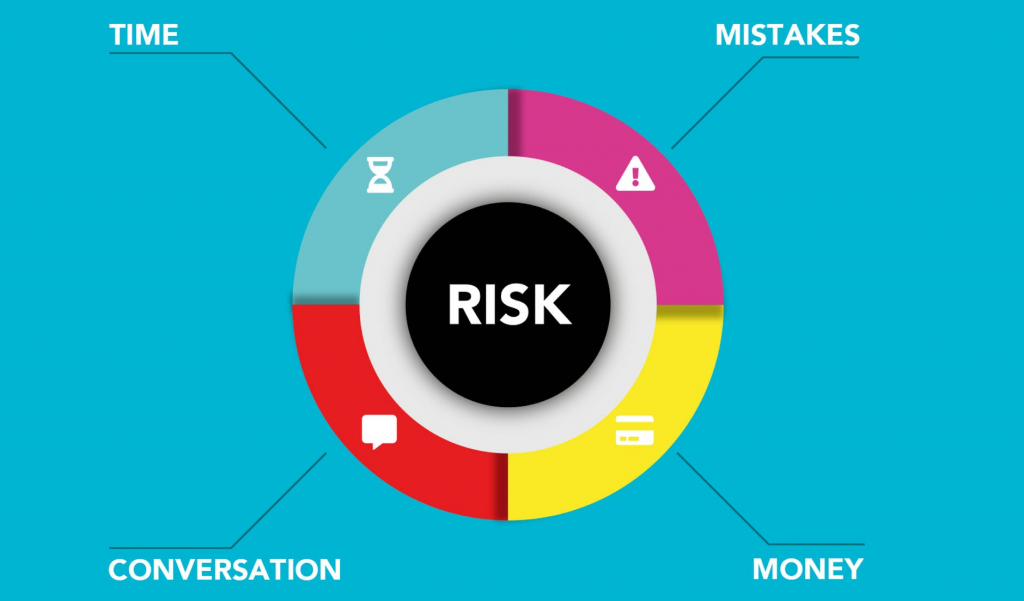
Risk is inherent no matter the industry. What is a risk factor? Well, it is part of the management process where it is determined what could potentially become an issue for the organisation. Risk management consulting firms will come up with model risk management, making managing the process a little clearer for these companies.
Break out your best projector under $500 and get ready for a presentation. This is about what these companies can do to mitigate risk factors within their own house.
Stages of Management Risk
There are five stages to risk management: identify, analyse, prioritise, treat, and monitor. Understanding these basic steps will go a long way towards creating a risk assessment model that works. There are risk management solutions and modifiable risk factors.
Having a risk monitor, a risk evaluation, and a risk review are all important steps in the process. But what does risk management do? Let’s take a look deeper into the process to understand.
Tips for Risk Assessment and Managing the Process
Now that we understand the five stages of management risk, let us take a deeper look at some of the things that can make risk management a more effective process.
Be Clear About Roles and Responsibilities
There are many responsibilities within a company. Knowing where those leadership responsibilities lay is important. Who handles legal responsibilities Professional responsibilities? Whose responsibility is it to take the lead on certain risk resolution practices?
Knowing who is responsible for what is a good place to start. It is easy to say that the company needs to be responsible but if there is no one to take on the role of leadership, all of that is simply talk and nothing more.
Leadership is the part of the company that is held accountable. The employees count on them to handle the important matters and steer the direction of the company.
Evaluate the Risk Management Process
With leadership established, it is time to take a look at the different processes. There is a safety assessment that any company should perform, ensuring that employees remain safe while they are on the job site.
Understanding what risk management companies can offer is one thing. But having a fall risk assessment tool and risk management solutions means being as prepared as possible when these situations arise. No one can be truly, 100% prepared, but they can be close. Giving your organisation a fighting chance is what risk assessment and risk management solutions are all about.
Create Risk Mitigation Strategies
Okay, so we know that there will be instances in which risks become reality. What do the most successful companies do to mitigate the results of those risks and move into the recovery phase after that?
There are many different strategies that companies can take. Inside of the risk management strategy is a few sub-strategies. Supporting strategies like among us strategies, test taking strategies, risk response strategies, precision strategies, and eagle strategies can help clearly define what path a company will take.
A company needs to define strategically what they will do in the face of a risk event. Though the plan may not go 100% as it was meant to, it at least provides a better chance of moving through the risk and towards recovery.
Learn from Past Mistakes
No company can have a positive integrated risk management system without learning from mistakes. Everybody makes mistakes, even the top companies in the world. If anything, mistakes are proof that you are trying.
A mistake should be a learning experience if anything. Because we all make mistakes, we should all be willing to learn from them. There are teachable moments in every mistake and the most successful among us learn from those mistakes. Don’t be afraid to look at what went wrong in a particular instance and how that situation could have been avoided or better handled.
Document All Risks in a Risk Register
Learning from your mistakes is fine and well, but time can make us all forgetful. Only with a risk register can you properly manage your risk. A risk manager will keep risk logs of all the documented instances that could or have occurred.
There are risk register examples and even a risk register template to be borrowed from. All of which can provide the foundation needed to properly plan for the future. There is no better way to plan for risks in the future than to document and learn from those mistakes that have already been made.
With a register, leadership will have the tools that it needs to sit down and create a proper plan of action going forward. Otherwise, history is doomed to repeat itself and create problems that may have otherwise been avoided.

Keep Monitoring and Reviewing
Finally, the last step to effective vendor risk management is to perform a risk review. The process of running a risk monitor should be constant. Security risk management is about evaluating all of the possible factors involved and being as prepared as possible to handle them.
Just because things have been smooth for a long time does not mean they will continue to be smooth. Have recurring risk management meetings to assess the most relevant risks to the company and how to best handle them.
There is no such thing as being totally safe from risk. But companies that are best prepared to handle them when they arise are the ones who come out on the other side in better shape.
Conclusion
Risk is not going to go away. There are factors to each organisation that need paying attention to. Planning is important but risk management is about minimising the impact of those risks. Being able to move through them successfully is what good businesses do.
Without a proper risk management strategy, companies are setting themselves up for serious implications. The key to proper risk strategy is to follow the five aspects of risk management and do their best to plan. Past that, there is not much else that can be done.
Author name – Liam Mills
Bio – Liam Mills is a Supplier Quality Assurance Manager, expert and founder of ValueHunta.
